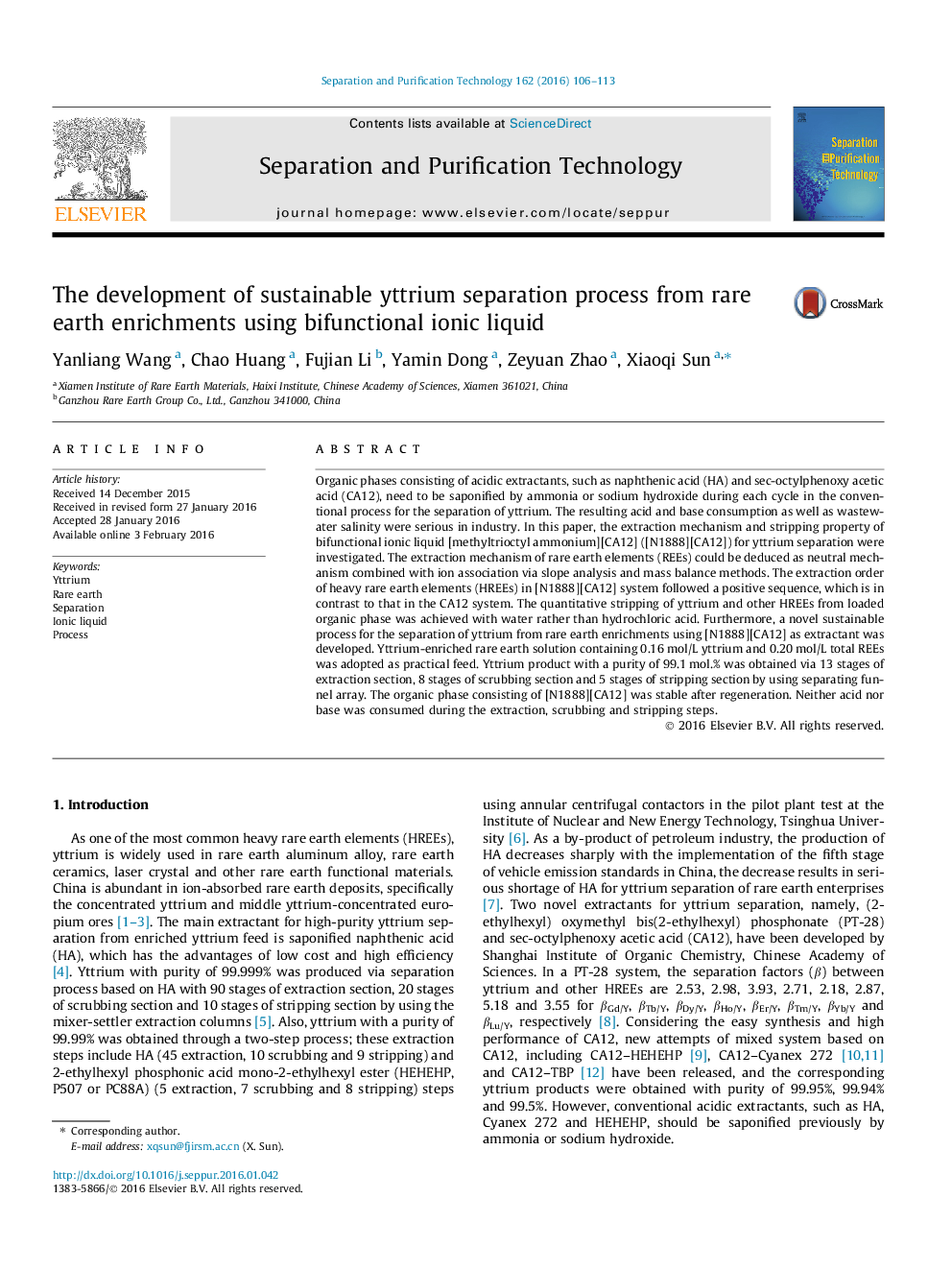| کد مقاله | کد نشریه | سال انتشار | مقاله انگلیسی | نسخه تمام متن |
|---|---|---|---|---|
| 639945 | 1456958 | 2016 | 8 صفحه PDF | دانلود رایگان |
• The extraction and stripping property of [N1888][CA12] were studied.
• A novel sustainable process for the separation of Y from Y-enrichments was developed.
• 98.5% Y product was obtained via total 26 stages of extraction, scrubbing and stripping section.
• The reagent loss of organic phase consisted of [N1888][CA12] was lower than 0.043%.
• No acid/base was consumed during the extraction, scrubbing and stripping steps.
Organic phases consisting of acidic extractants, such as naphthenic acid (HA) and sec-octylphenoxy acetic acid (CA12), need to be saponified by ammonia or sodium hydroxide during each cycle in the conventional process for the separation of yttrium. The resulting acid and base consumption as well as wastewater salinity were serious in industry. In this paper, the extraction mechanism and stripping property of bifunctional ionic liquid [methyltrioctyl ammonium][CA12] ([N1888][CA12]) for yttrium separation were investigated. The extraction mechanism of rare earth elements (REEs) could be deduced as neutral mechanism combined with ion association via slope analysis and mass balance methods. The extraction order of heavy rare earth elements (HREEs) in [N1888][CA12] system followed a positive sequence, which is in contrast to that in the CA12 system. The quantitative stripping of yttrium and other HREEs from loaded organic phase was achieved with water rather than hydrochloric acid. Furthermore, a novel sustainable process for the separation of yttrium from rare earth enrichments using [N1888][CA12] as extractant was developed. Yttrium-enriched rare earth solution containing 0.16 mol/L yttrium and 0.20 mol/L total REEs was adopted as practical feed. Yttrium product with a purity of 99.1 mol.% was obtained via 13 stages of extraction section, 8 stages of scrubbing section and 5 stages of stripping section by using separating funnel array. The organic phase consisting of [N1888][CA12] was stable after regeneration. Neither acid nor base was consumed during the extraction, scrubbing and stripping steps.
Figure optionsDownload as PowerPoint slide
Journal: Separation and Purification Technology - Volume 162, 13 April 2016, Pages 106–113
